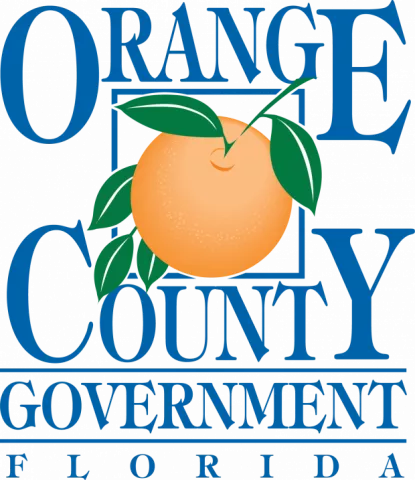
It is EarthDay 2021. Take a moment to appreciate our earth, what we have been given. And filled with gratitude, we begin our work
The Washington Post recently reviewed how cities were gearing up to spend American Rescue Act funds. The article focused on how cities that incurred public health and economic damage during the COVID 19 pandemic were starting to consider how they could funnel funds to upgrade public health, infrastructure and kick-start economic development. Many other cities and utilities are looking at water infrastructure funding since that is funded under the America Rescue Act. Other cities are starting to consider sustainability and resiliency projects that can be funded now or later when (and if) Congress passes an infrastructure bill.
Communities can learn from Orange County by participating in its Smart & Healthy Building Readiness Cohort, which kicked off with Mayor Jerry Deming’s keynote on April 15.
- You can see the first session with Mayor Jerry Demings and Jeff Benavides, Orange County’s Chief Sustainability and Resilience Officer here.
- All presentations can be found at the end of this article.
- You can register for the next session here.
- Future sessions can be found here.
Orange County has a long history of planning ahead
Orange County, Orlando, Winter Park and other central Florida communities have pioneered innovative approaches to sustainability and resiliency for over a decade. For example, Orange County has the largest installed base of residential solar in Florida, having started its program, in partnership with Solar United Neighbors, in 2014. An overview of Orlando’s long history of sustainable planning can be found here, Winter Park’s here and Orange County here.
Orange County Sustainability and Resilience Plan
In early 2020, Orange County launched a county wide sustainability and resiliency planning effort that included public and private stakeholders. You can find a description below and the plan below. It includes 12 different goals spanning Energy & Climate Action, Buildings and Infrastructure, Water Use and Quality, Mobility and Fleet, Supply Chain and Materials Management and Trees and Lands.
Built environment
Specifically, Orange County is looking to improve energy, water, occupancy standards and resiliency for its built environment assets, which includes
Orange County Convention Center, the second largest convention center in the US, and -
- 8 shelters and gyms
- 8 radio communication buildings
- 18 operational buildings for support staff
- 18 community services buildings
- 10 youth living quarters that are also hurricane shelters
- 14 family services buildings
- 17 corrections facilities
- 815 pump stations for water and wastewater
Electrical vehicle infrastructure
Orange County, along with Orlando and Winter Park are also planing the installation of electric vehicle public charging stations (‘EV Infrastructure) throughout their cities and the county. Building codes are in the process of being amended and policies are being considered that would incent private developers to include EV infrastructure throughout the built environment. The goal for Orange County alone is to go from 30 EV stations to over 500 EV public charging stations.
Orange County and the Smart Cities Council working together
To implement these plans for upgrades to built-environment, water infrastructure and mobility, Orange County applied to the Smart Cities Council Readiness Challenge in late 2020. The Smart Cities Council Readiness Program, of which the Readiness Challenge is the entry-point, is a global program where cities apply, are selected and then work with the Council to make their communities livable, workable and sustainable by accelerating the implementation of technology and intelligent design.
Jeff Benavides, the Chief Sustainability and Resilience Officer for Orange County, when interviewed by the Council during the Readiness Challenge application process in December 2020, told us ‘…we decided to apply for the Readiness Challenge in 2020 because we wanted to start implementing projects in 2021 and knew, based on the experience that Orlando had with this Readiness Challenge process, that the Council would assist in accelerating our procurement of innovative solutions.”
Along with Brisbane, Queensland, Australia and Nashville, Tennessee, Orange County was selected as a global Readiness Challenge winner in January of 2021. Orange County and the Council started to planning process on April 15.
Orange County initial planning session
You can see Mayor Demings’ keynote in the first planning session here. Jeff Benavides also discussed the upcoming and current projects where Orange County is willing to fund innovative solutions offered through the Council’s Readiness Program. His presentation is attached below. The Council’s presentation that outlined the innovative solution process that would lead to fundable projects can also be found below.
Orange County’s schedule of future planning sessions can be found here. It will culminate in October 2021 with a scoping charette where invited experts and solution providers will collaborate with Orange County staff in planning current and future projects to accelerate their path to procurement.
2020 Orange County Sustainability and Resiliency Plan
The 2020 Orange County Sustainability and Resiliency Plan identified over ten goals, some with performance metrics for this year (2021.) These goals included:
Energy & Climate Action
- Reduce County operations greenhouse gas emissions from 2015 baseline 30% by 2030
- Achieve 100% of County operations electricity load from clean, renewable sources by 2035
- Implement community-wide energy saving programs for all
Buildings & Infrastructure
- Beginning in FY21, County-funded buildings and infrastructure will meet new high-performance and green building standards.
- Align energy management strategies across County departments to reduce 30% of building and infrastructure energy use by 2025.
- Reduce risks for County services and infrastructure based on regional resilience indicators and updated mitigation plans.
Water Use & Quality
- Protect water quality through innovative technology and integrated water management audits at County facilities.
- Reduce water use 25% across County facilities by 2030 through water reuse and equipment efficiencies.
- Develop clean and safe access to alternate water supply to meet future demand
Mobility & Fleet
- Optimize vehicle fleet performance through onboard technology and a 50% reduction of petroleum-based fuel by 2030.
- Deploy EV ready infrastructure and convert 100% of light-duty County fleet to electric or alternative by 2030.
- Improve vehicle, bicycle, and pedestrian roadway safety, resilience, and interoperability through traffic technology retrofits at 300 intersections by 2025.
Supply Chain & Materials Management
- Implement a sustainable procurement program with supplier metrics by 2023.
- Increase waste diversion rates to 70% by 2030 at County facilities.
- Decrease the per customer landfill disposal tonnage 15% by 2025.
Trees & Lands
- Preserve an additional 23,000 acres of environmentally sensitive lands and increase County natural land assets by 2030.
- Protect and enhance tree canopy and wildlife habitats on County properties.



